In the previous article, we have discussed how to deploy a local Java application directly to an Alibaba Cloud ECS instance. For those who are already using Alibaba Cloud Enterprise Distributed Application Service (EDAS), you may be wondering how to use this plug-in to deploy applications on EDAS. In this article, we will answer this question and explain how to deploy Java applications to Alibaba Cloud EDAS in Eclipse.
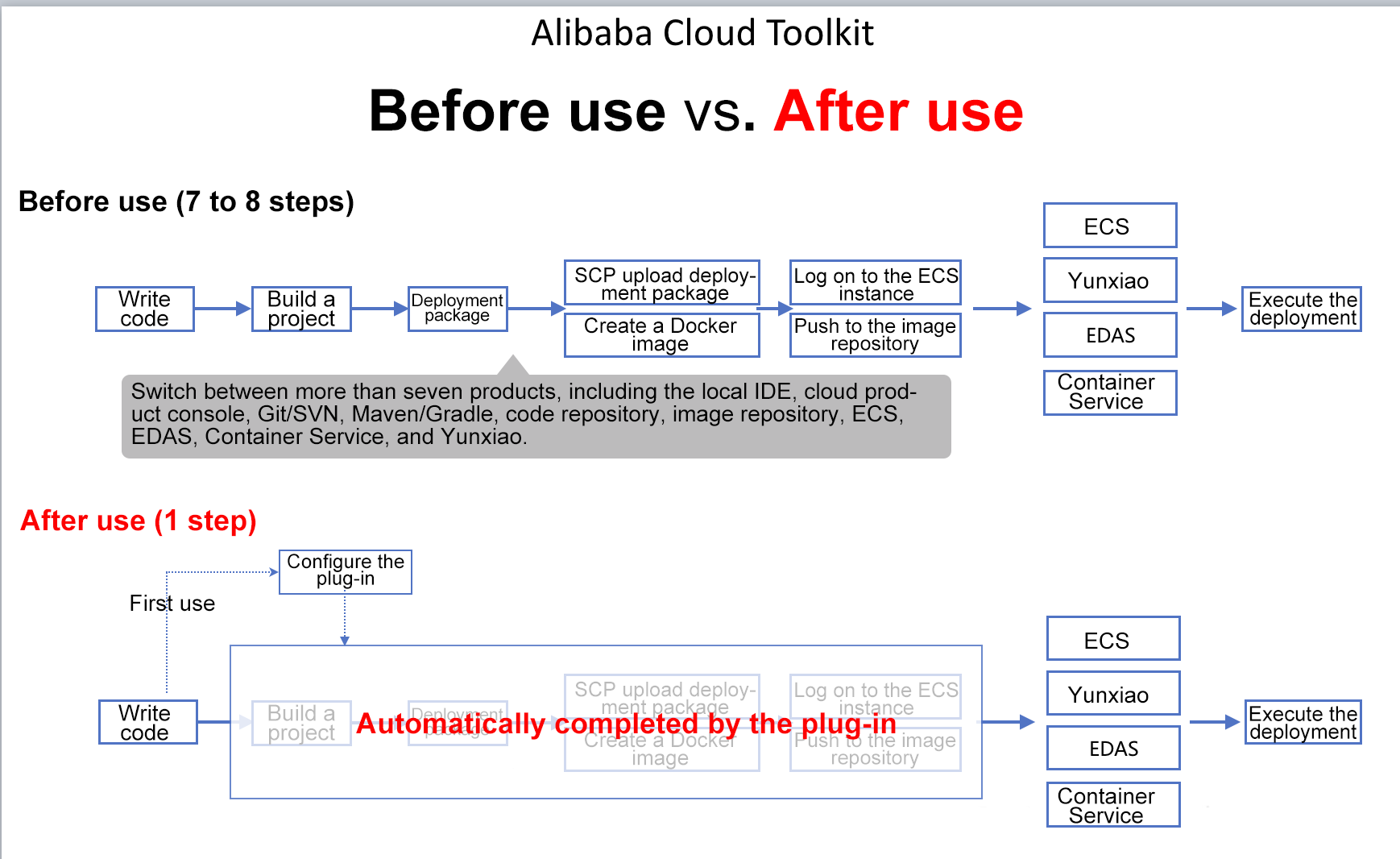
Enterprise Distributed Application Service (EDAS) is a PaaS platform involving applications and microservices. It provides a variety of application release capabilities and lightweight microservice solutions that can help you solve monitoring, diagnostics, and high-availability O&M issues in your application and service management processes. EDAS is available in the Spring Cloud and Dubbo environments.
The coding method is similar no matter whether you are compiling Java applications that run on EDAS or locally. Therefore, this article takes a Java servlet for printing "Hello World" on a Web page as an example to explain the deployment method.
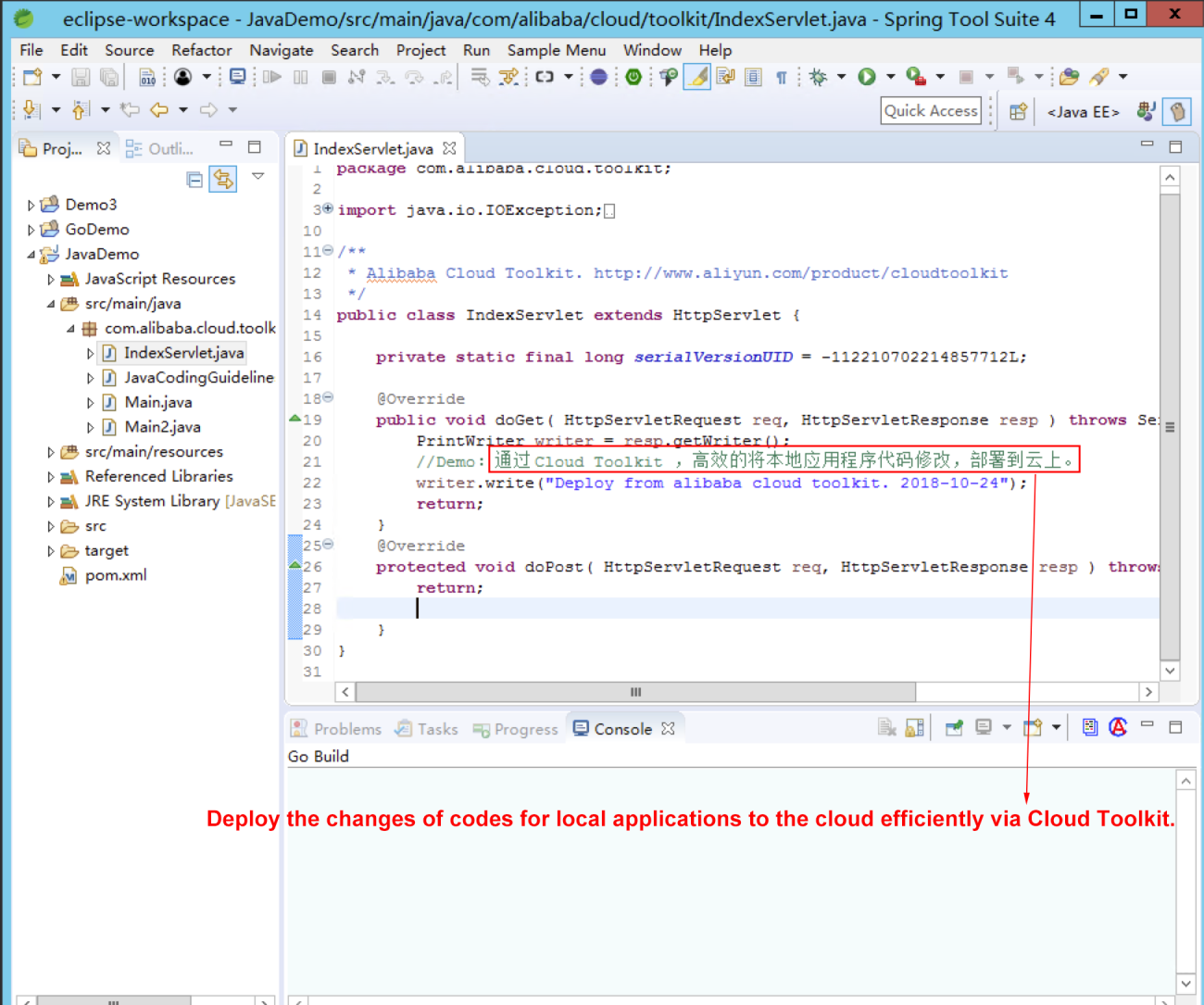
public class IndexServlet extends HttpServlet {
private static final long serialVersionUID = -112210702214857712L;
@Override
public void doGet( HttpServletRequest req, HttpServletResponse resp ) throws ServletException, IOException {
PrintWriter writer = resp.getWriter();
// Demo: Use Alibaba Cloud Toolkit to modify the code of a local application and deploy the application to the cloud.
writer.write("Deploy from alibaba cloud toolkit. 2018-10-24");
return;
}
@Override
protected void doPost( HttpServletRequest req, HttpServletResponse resp ) throws ServletException, IOException {
return;
}}You can download the source code through this link.
The preceding code is a standard Java project used to print the string "Hello World" on a Web page.
Alibaba Cloud provides an Eclipse-based plug-in to help developers efficiently deploy applications written in the local IDE to EDAS.
URL of the plug-in: https://www.aliyun.com/product/cloudtoolkit_en
The installation process of this Eclipse-based plug-in is similar to that of a common plug-in, and therefore will not be detailed here.
After installing the plug-in, configure the preferences by choosing:
Top menu > Window > Preferences > Alibaba Cloud Toolkit > Accounts
When the following page is displayed, configure the AK and SK of your Alibaba Cloud account to complete the configuration of preferences.( If you are using a RAM user account, enter the AK and SK of the RAM user.)
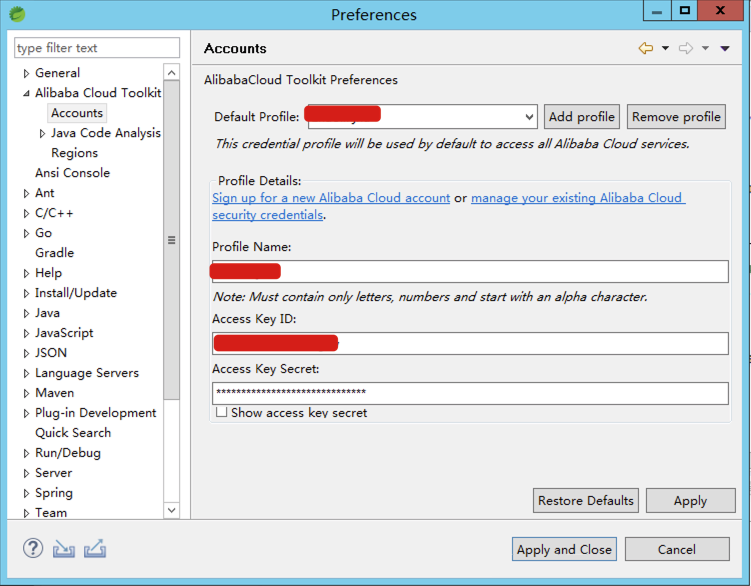
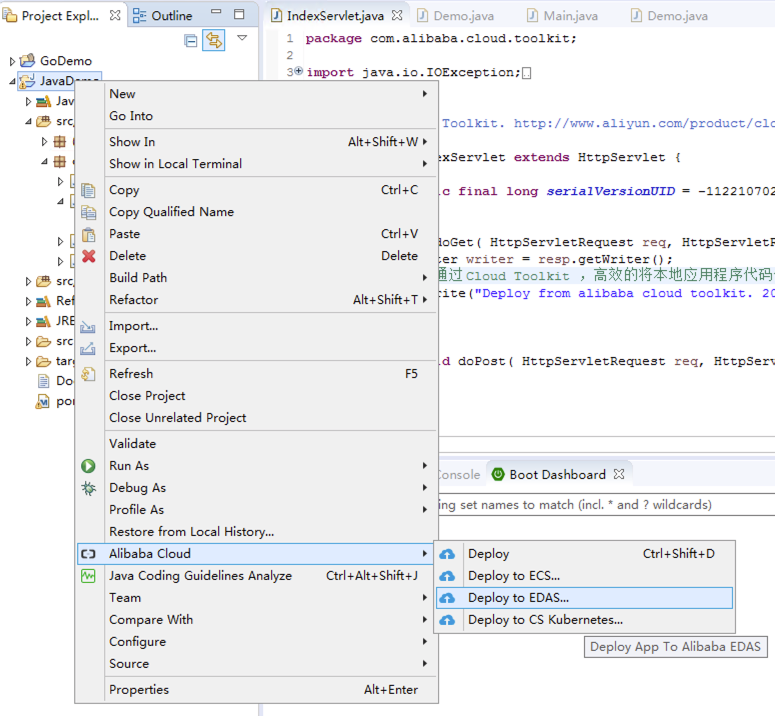
In Eclipse, right-click the project name and choose Alibaba Cloud > Deploy to EDAS from the shortcut menu. The following deployment window is displayed:
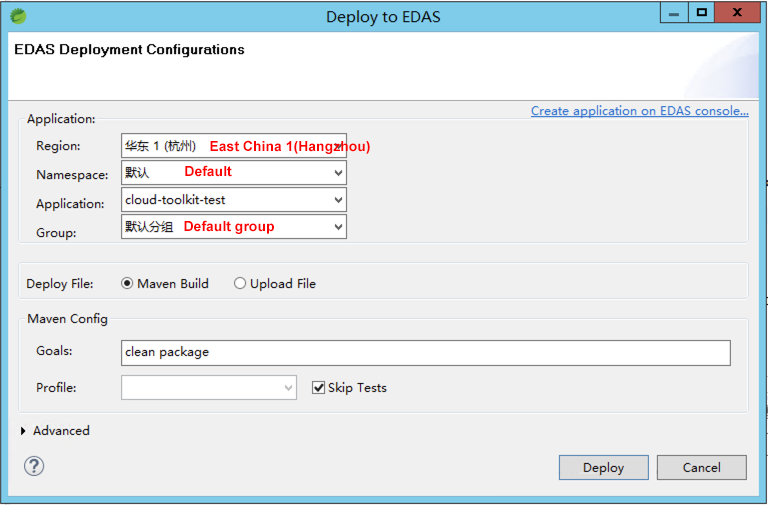
In the EDAS Deployment Configuration dialog box, set Region, Namespace, Application, and Group based on your actual requirements, choose a deployment package generation mode, and click Deploy.
Note: If you have not created any applications in EDAS yet, click Create application on EDAS console in the upper-right corner of the dialog box to go to the EDAS console and create an application. For more information about how to create an application, see https://www.alibabacloud.com/help/doc-detail/99912.html
Description of parameters in the Application pane:
Deploy File: Two options are available.
Deploying a Java Application to an ECS Instance in IntelliJ IDEA
Alibaba Clouder - November 30, 2018
Alibaba Clouder - November 7, 2019
Alibaba Clouder - August 18, 2020
Nick - July 2, 2019
Nick - May 6, 2019
Nick - June 26, 2019
 Robotic Process Automation (RPA)
Robotic Process Automation (RPA)
Robotic Process Automation (RPA) allows you to automate repetitive tasks and integrate business rules and decisions into processes.
Learn More Content Moderation
Content Moderation
Image and video moderation service that accurately detects inappropriate content.
Learn More Resource Management
Resource Management
Organize and manage your resources in a hierarchical manner by using resource directories, folders, accounts, and resource groups.
Learn More Managed Service for Prometheus
Managed Service for Prometheus
Multi-source metrics are aggregated to monitor the status of your business and services in real time.
Learn MoreMore Posts by Nick(倪超)